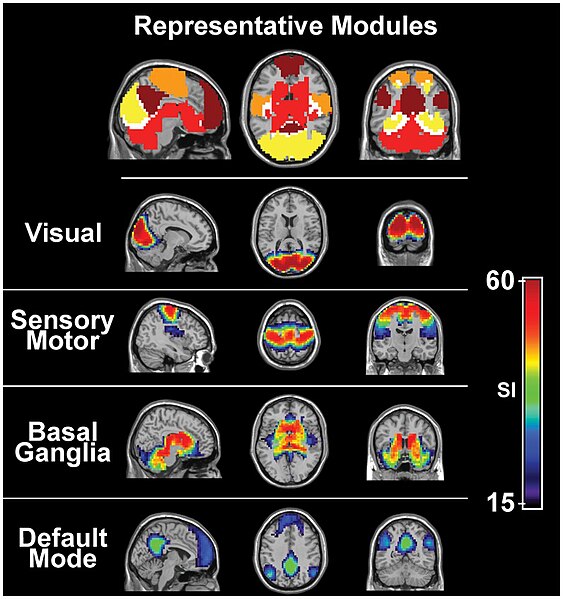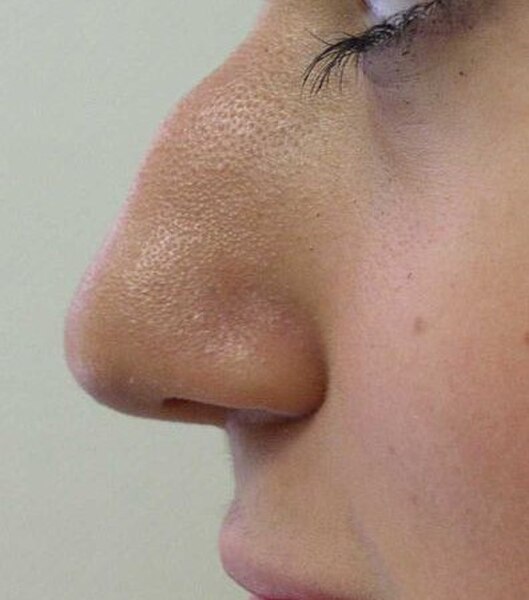Touch is perceiving the environment using skin. Specialized receptors in the skin send signals to the brain indicating light and soft pressure, hot and cold, body position and pain. It is a subset of the sensory nervous system, which also includes the visual, auditory, olfactory, gustatory and vestibular senses.
Touch is a crucial means of receiving information. This photo shows tactile markings identifying stairs for visually impaired people.
Touch can result in many different physiological reactions. Here, a baby laughs at being tickled by an older sister.
The sensory nervous system is a part of the nervous system responsible for processing sensory information. A sensory system consists of sensory neurons, neural pathways, and parts of the brain involved in sensory perception and interoception. Commonly recognized sensory systems are those for vision, hearing, touch, taste, smell, balance and visceral sensation. Sense organs are transducers that convert data from the outer physical world to the realm of the mind where people interpret the information, creating their perception of the world around them.
The visual system and the somatosensory system are active even during resting state fMRI
Activation and response in the sensory nervous system
Human ear
Human nose






